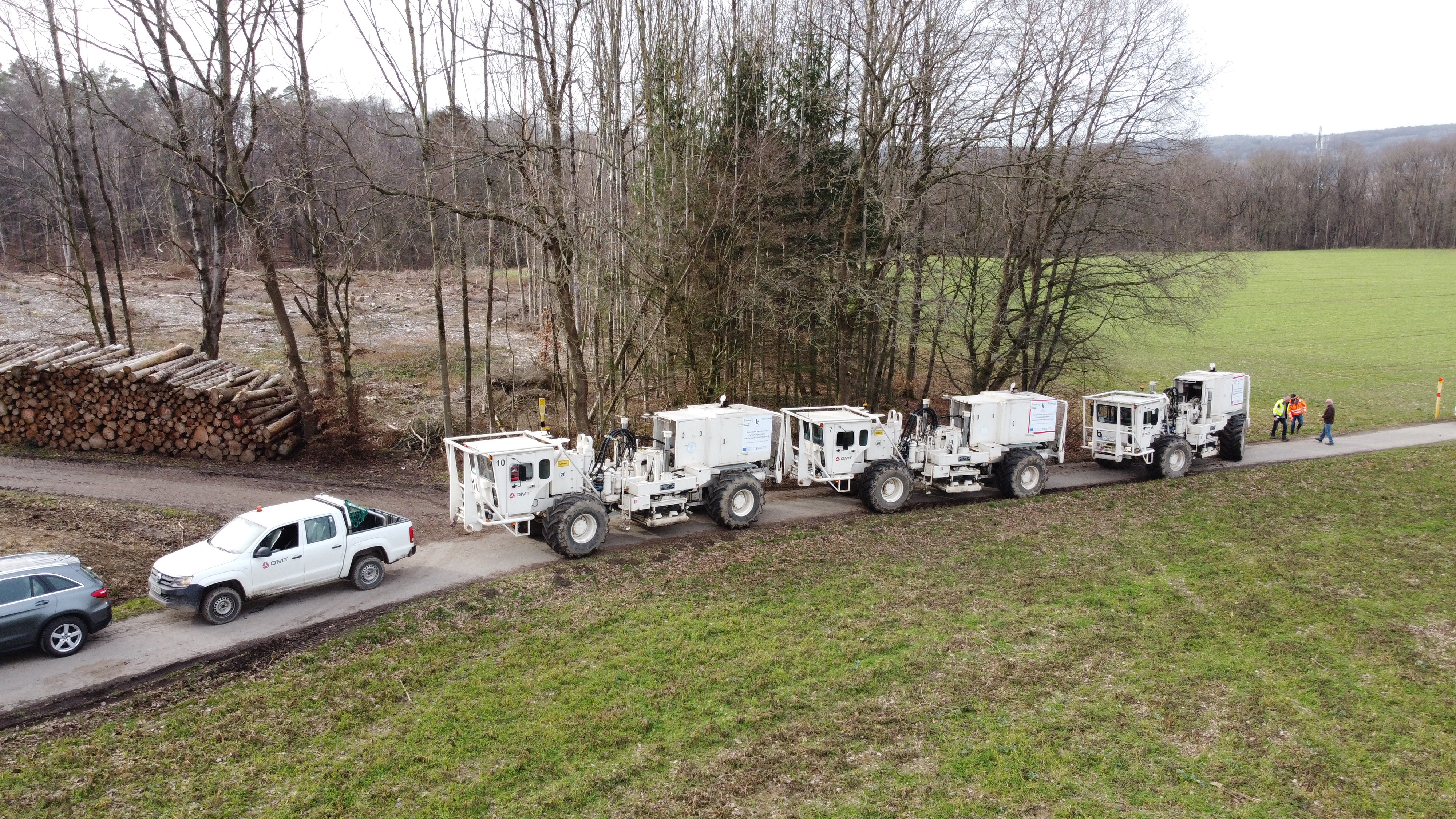The Ruhr area consists of rocks approximately 300 million years old, which were heavily folded during the so-called Variscan orogeny. These geological structures potentially provide suitable conditions for the storage and extraction of geothermal energy. The collaborative project VESTA focuses on the research of heat storage in water-filled rock layers (aquifers), while the measurement campaign CONTRAST (Carboniferous Temperature Storage) expands VESTA. Through CONTRAST, a fundamental understanding of the geological and tectonic conditions in the Ruhr area is to be achieved. This includes the investigation of sandstone horizons from the geological period of the Lower Upper Carboniferous at depths of 1,200 to 1,500 meters. For the exploration of the subsurface, CONTRAST employs so-called vibration seismic methods, which generate seismic signals and measure their reflections. This allows for the creation of a detailed structural map of the potential geothermal storage.
Objectives
The main goal of the CONTRAST concept study is to evaluate the possibilities of hydrothermal geothermal energy extraction and underground heat storage in the Ruhr area. To achieve this, the research team uses geophysical deep exploration to analyze the geological and hydraulic properties of the subsurface.
The methodology includes conducting vibration seismic surveys over a distance of about 5 kilometers (see the map below) within Bochum. Using special microphones, the geophones, the emitted seismic signals and their reflections from the deeper geological subsurface are recorded. This data serves as the basis for the structural mapping of the Bochum subsurface and aids in decision-making for future exploration of geothermal energy and underground heat storage. Deep geothermal energy has already been successfully used for heating households in metropolises like Munich and Paris for many years. VESTA CONTRAST takes an initial step to open this possibility for Bochum as well.
Thus, the project makes an important contribution to sustainable energy supply and the energy transition.
